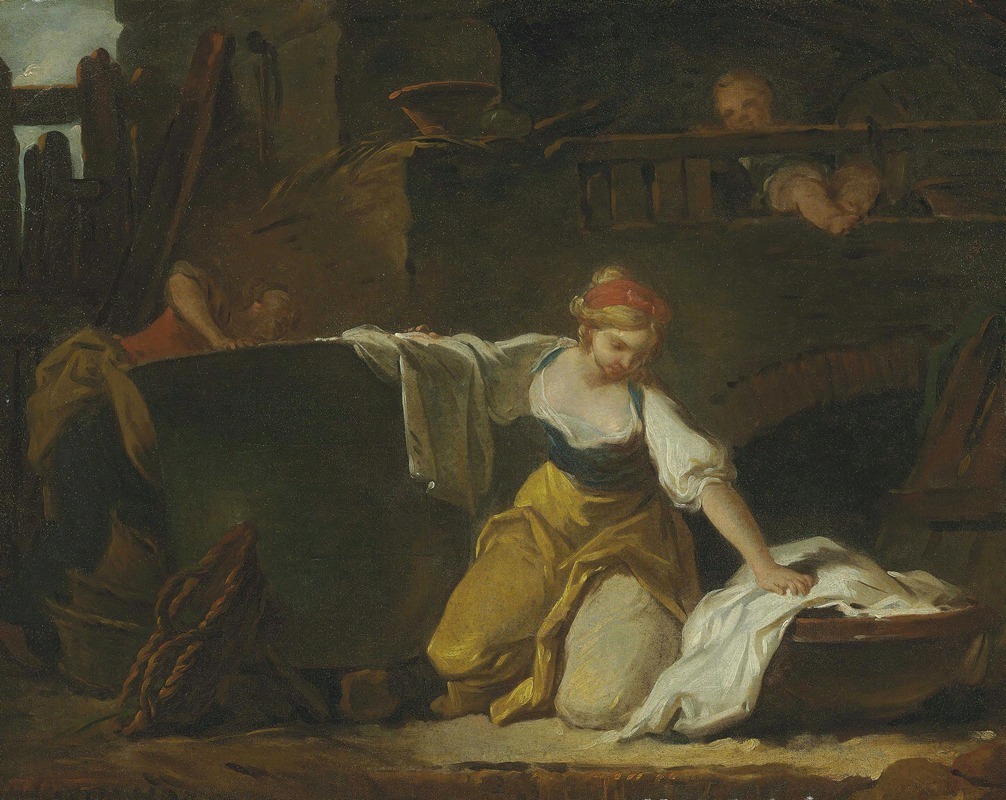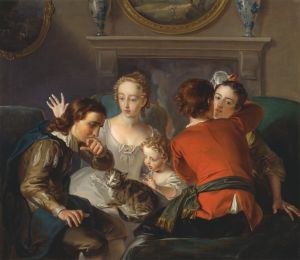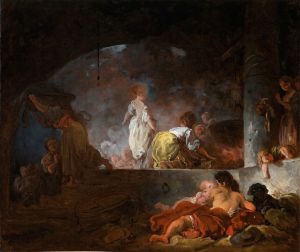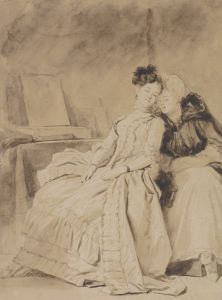
Young Washerwomen
A hand-painted replica of Jean-Honoré Fragonard’s masterpiece Young Washerwomen, meticulously crafted by professional artists to capture the true essence of the original. Each piece is created with museum-quality canvas and rare mineral pigments, carefully painted by experienced artists with delicate brushstrokes and rich, layered colors to perfectly recreate the texture of the original artwork. Unlike machine-printed reproductions, this hand-painted version brings the painting to life, infused with the artist’s emotions and skill in every stroke. Whether for personal collection or home decoration, it instantly elevates the artistic atmosphere of any space.
Jean-Honoré Fragonard's "Young Washerwomen" is a captivating example of the Rococo style that flourished in 18th-century France. Fragonard, born in 1732 in Grasse, France, was a prolific artist known for his exuberant and fluid style, often depicting scenes of romance, leisure, and domestic life. His works are characterized by their light-heartedness, vibrant colors, and dynamic compositions, which are evident in "Young Washerwomen."
The painting "Young Washerwomen" showcases Fragonard's ability to capture the everyday activities of people with a sense of grace and liveliness. The artwork depicts young women engaged in the task of washing clothes, a common domestic chore. Fragonard's treatment of this subject matter elevates the mundane activity to a scene of charm and beauty. The composition is lively, with the figures arranged in a way that guides the viewer's eye through the scene, creating a sense of movement and interaction among the women.
Fragonard's use of color and light in "Young Washerwomen" is particularly noteworthy. The palette is soft yet vibrant, with delicate pastels and warm tones that enhance the painting's overall sense of warmth and intimacy. The light appears to gently caress the figures, highlighting their forms and the textures of their clothing. This use of light not only adds depth to the composition but also imbues the scene with a sense of immediacy and presence.
The Rococo style, which Fragonard exemplified, was characterized by its ornate and decorative qualities, often focusing on themes of love, nature, and playfulness. "Young Washerwomen" fits within this tradition, as it captures a moment of everyday life with a sense of whimsy and delight. The painting reflects the Rococo interest in depicting scenes of leisure and the pleasures of life, even in the context of work.
Fragonard's ability to convey emotion and narrative through his brushwork is evident in "Young Washerwomen." The expressions and gestures of the women suggest a camaraderie and shared experience, inviting the viewer to imagine the conversations and interactions taking place. This focus on human connection and the subtleties of social interaction is a hallmark of Fragonard's work.
The painting is also an example of Fragonard's skill in rendering textures and details. The fabrics of the women's clothing, the water, and the surrounding environment are depicted with a keen eye for detail, yet without sacrificing the overall sense of spontaneity and fluidity. This balance between detail and dynamism is a testament to Fragonard's mastery of his craft.
"Young Washerwomen" is housed in the collection of the Louvre Museum in Paris, where it continues to be appreciated by art lovers and scholars alike. The painting remains an important work within Fragonard's oeuvre, illustrating his ability to transform everyday scenes into works of art that capture the imagination and delight the senses.
In summary, Jean-Honoré Fragonard's "Young Washerwomen" is a quintessential example of the Rococo style, showcasing the artist's skill in composition, color, and narrative. Through this painting, Fragonard elevates a simple domestic scene into a celebration of life and human connection, reflecting the artistic and cultural values of his time.


















